The description of the Old English Sheepdogs - Bobtail - is well known even to those who are far from the world of dog breeding. Fluffy giants with an absent or short-cropped tail attract attention during a walk, are recognized champions of dog shows and easily acquire the status of a pet. The bobtail dog can get along with anyone, but its ancestors were wonderful shepherds and courageously protected the flock from wolves.
The breed has not lost its intellectual abilities - its representatives are so smart that they are used as guides for the blind and in rehabilitation therapy for children with disabilities.
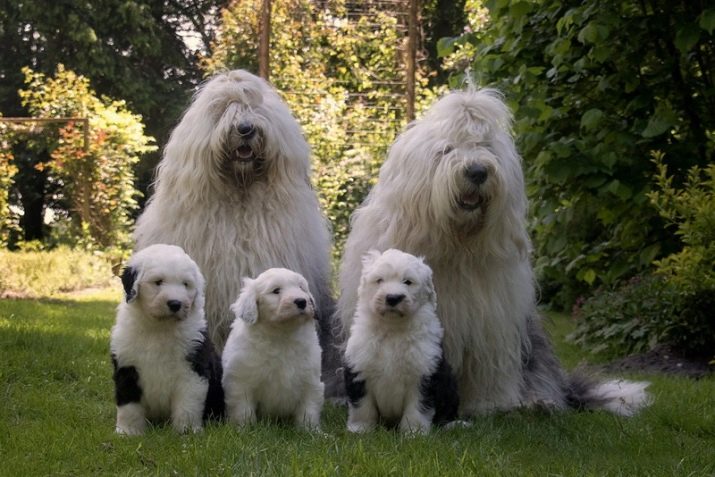
Origin history
The Old English Sheepdog is a breed that has more than one century of faithful service to people in its history. There are even suggestions that the ancestors of the bobtail came to Britain from Ancient Rome, where representatives of the nobility were very partial to such dogs. Possessing a typical herding breed appearance, allowing the dog to get lost among the flocks without the risk of being seen by a predator, they easily took root in Foggy Albion.
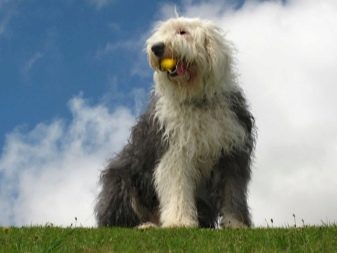
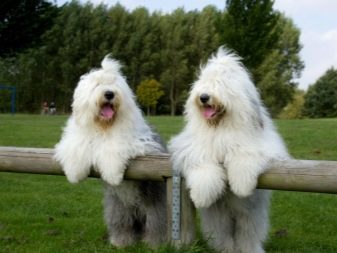
In the British Isles, furry, fearless dogs, quickly gained popularity among representatives of the farming class. Good guards, devoted pets and magnificent shepherds easily replaced hired workers when grazing cattle, and in maintenance they were much cheaper.The absence of a specific smell emanating from the animal made it possible to quickly accustom the sheep to a new member of the flock, and served as part of a mask from predators.
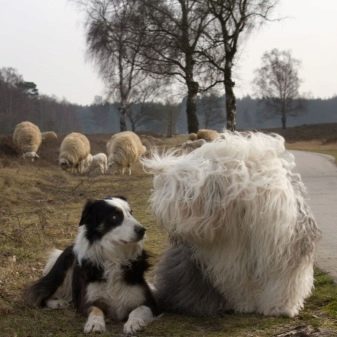

Like many other working breeds, Bobtail for a long time did not have a pronounced phenotype inherited from generation to generation. But with the addition of the blood of the Briards and the South Russian Shepherds, steady results were obtained. The resulting animals had a large physique, long hair, and an unusual short tail. Initially, it was not stopped, just as a result of crossbreeding, a short tail mutation appeared.


The official name of the breed in the UK today sounds like "Old English Shepherd." But recognition, despite the centuries-old practice of breeding, it received quite late, being considered insufficiently aristocratic and noble. The world's first bobtail dog show took place in 1864, and the first impressions of the cynological community were not entirely unambiguous. But appreciating the working qualities of the animal, it was nevertheless considered suitable for use in breeding work.
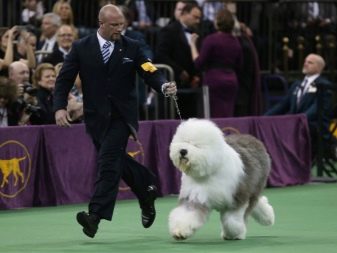
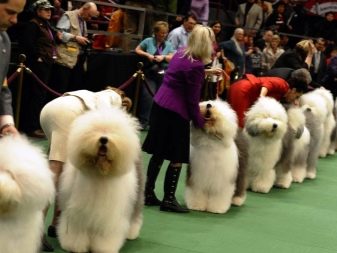
Initially, bobtails were allowed only to perform in specialized shepherd’s tests. But in the future, breeders won for their pets the right to compete in appearance. The first champions came from the counties of Gloucestershire, Norfolk, Suffolk. A significant contribution to the development and popularization of the breed was made by a gentleman from South England, Edward Kerr, who devoted a significant part of his life to breeding the Old English Shepherd.

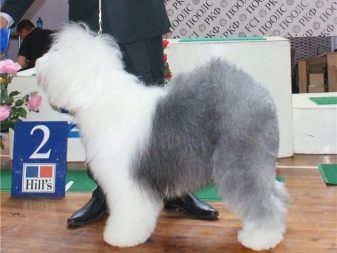
In 1888, the Old English Shepherd received its official standard, according to which dogs should have a short (not more than 4-5 cm) tail. Many years later, in 1993, the norms for protecting animal rights changed. The mandatory presence of a short tail has been removed from the text of the breed standard. But naturally both normal long-tailed individuals and animals with a shortened or absent process appear in litters.
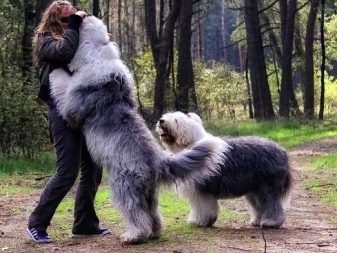
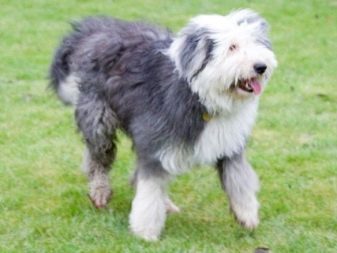
Description
Charming fluffy giants - representatives of the breed "Old English Shepherd" - at any age have a touching and cute appearance. But their puppies always cause special emotion. Kids look charming, have a contrasting black and white color, brown eyes. The presence of signs of heterochromia is acceptable - in this case, the iris will have brown and blue colors. Pure white and completely blue-eyed dogs are not allowed to breed and participate in exhibitions.
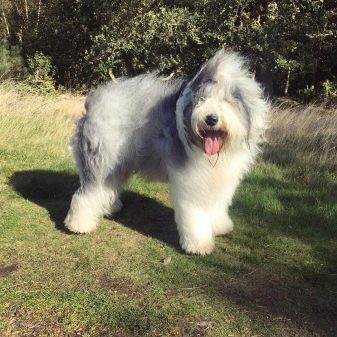
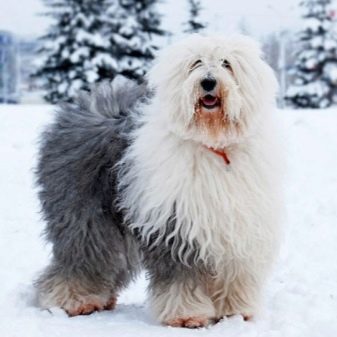
Being born tiny, by the age of 2 months puppies gain up to 4.5 kg of weight, and by the year they increase this figure by 10 times. By 12 months, the growth and body weight of the animal is fully consistent with the proportions of an adult dog.
Muscular, large, proportionately folded bobtail are an example of health and vitality. At the withers, the animal reaches 61 cm, the body format is square, the body is folded proportionally. A characteristic pedigree feature is croup raised above the level of the withers. The limbs are straight, with a well-developed, powerful skeleton. The tail of the animal can be long from birth, the stubby form has an end with a characteristic thickening, like that of a beaver.
Bobtail's head is large, developed, with pronounced superciliary arches, a wide and long muzzle. The lips are thick fleshy, the nose with a black lobe. On the sides of the head are hanging ears, having a medium size, tightly pressed to the skull. The eyes are dark, widely spaced, small.
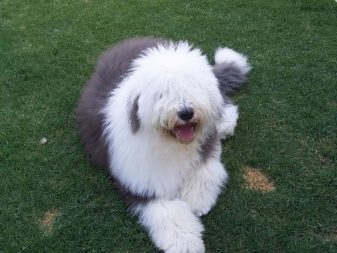
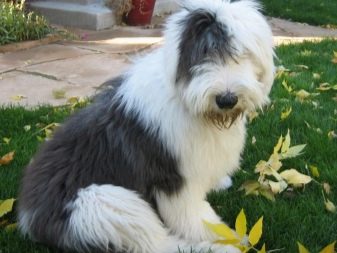
Mobes of Bobtail preserve the pedigree of their parents and most often inherit a lush coat. Often they are given out as a purebred animal, but with age the differences still make themselves felt. In order not to acquire a hybrid of unknown origin under the guise of a thoroughbred pet, it is worth buying dogs only in officially registered kennels or through clubs. The number of Old English Shepherds in Russia is small, and all the producers involved in breeding are well known.
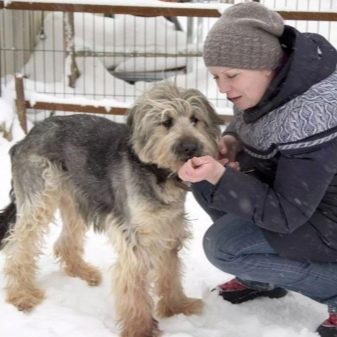
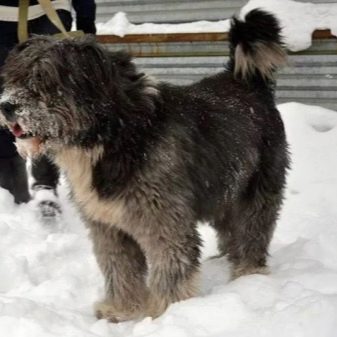
Wool and colors
The body of the bobtail is covered with a slightly wavy long outer hair, the undercoat is located below, providing additional thermoregulation. The coat is rather rough, lush, not prone to tangles. The color is distinguished by the white color of the chest, head, forepaws, abdomen and background marble, gray, gray-blue addition. The presence of sagging in a mostly gray or blue background is called a grizzly. The inclusion of brown, brown spots is excluded.
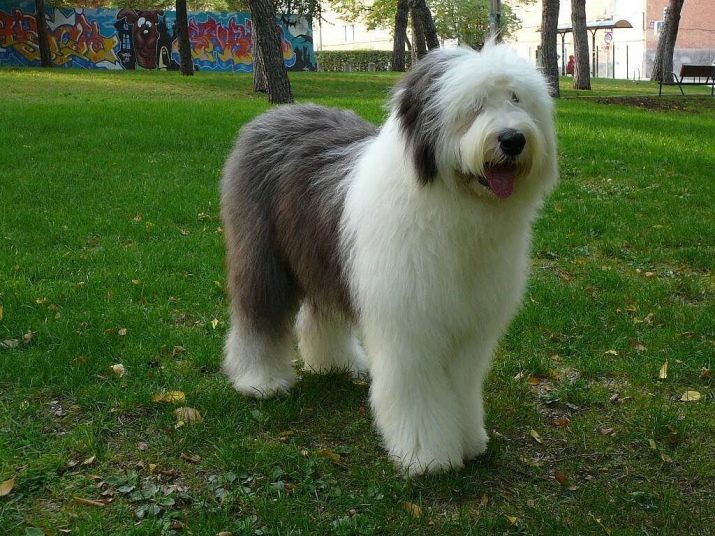
Black called bobtail, having a dark gray color. Puppies are born with a predominantly dark shade of coat. On a solid colored background, white spots are not allowed, but on the head, legs, stomach, contrasting areas are quite acceptable.
The Old English Shepherd has a characteristic feature - a gradual change in the color and quality of the outer hair. The final formation occurs only by 4-5 years. Youth color silver gray, with a slight haze. Adult dogs are always darker. Non-standard color options include merle, brown-white, black and white.
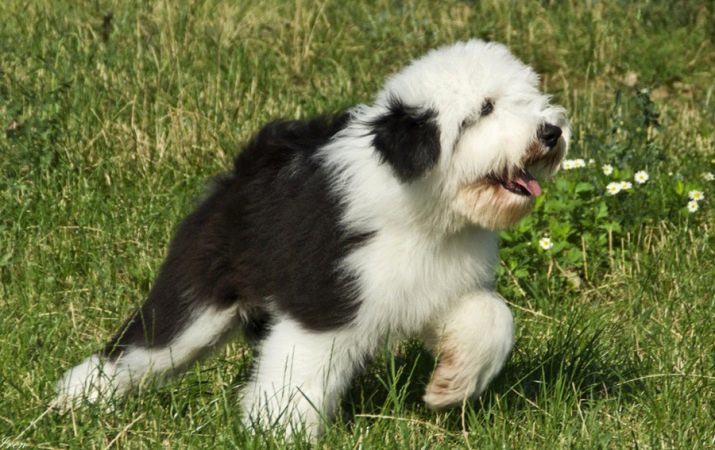
Appearance of puppies
When choosing a purebred pet, it is very important to pay attention to a number of signs that a puppy of an Old English Shepherd must have. These include:
- black and white coat color (white and blue puppy coloring is considered a tribal marriage);
- coal pigmentation of the nose, small pink spots are acceptable;
- scissor bite;
- hanging ears, not too high on the sides of the head.
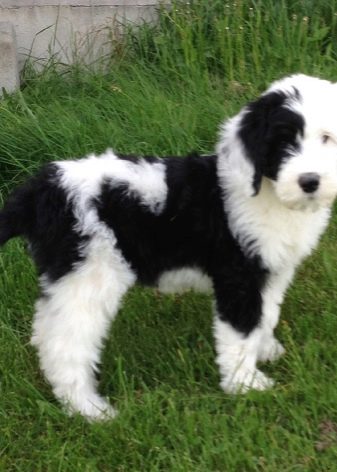
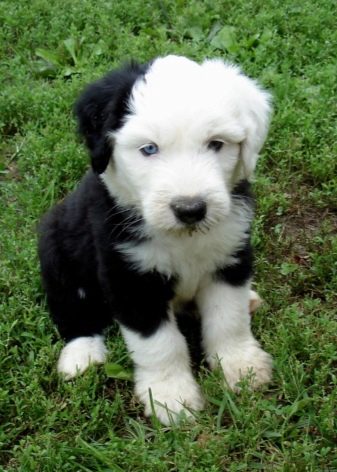
The puppy must meet its age standards, have sufficient fatness, not show signs of rickets of limbs.
Character
Bobtails today are the perfect companions, still able to demonstrate excellent working skills. In the absence of a herd of sheep, they no less enthusiastically try to bring the whole family together. The cheerful character of the puppies attracts the attention of breeders and lovers. They are always in contact, highly value the host society and need a high level of physical activity. These are classic fidgets that you should always be on the lookout for: keep wiring and slippers away, do not leave important documents within free access.
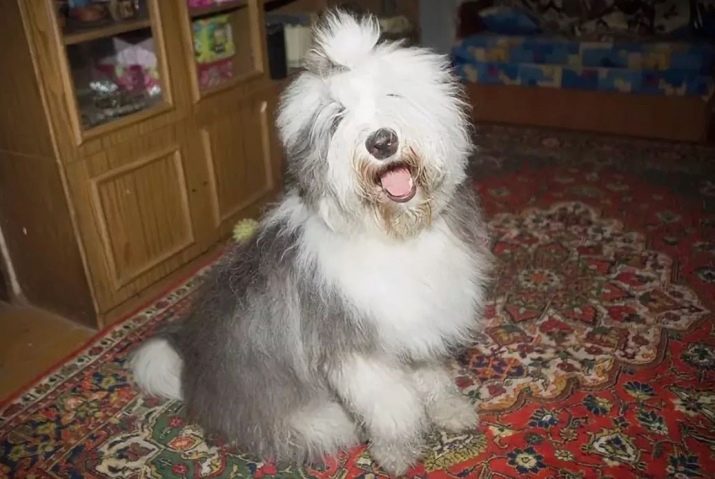
Adult bobtail, especially living in the house, retains its ability to turn into a cheerful hurricane, sweeping away everything in its path. Moreover, the pet often forgets about its considerable dimensions and frolics like a puppy. You can take a break from the society of the Old English Shepherd only by tiring it up pretty much. That is why the breed is often recommended for children or people who are passionate about sports and travel.
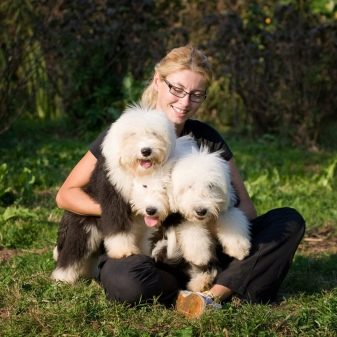

The more time the dog will spend with the owner outside the house, the less difficulties will arise with its activity the rest of the time.
Bobtails are often called "nannies" - the need to patronize their blood. With such a reliable guard, you can leave for a minute even a baby who has just learned to walk. And with older children, he is indispensable for a walk - both as a companion for games, and as a companion that can save you from danger. No aggression - only endless patience and love for people. In general, observing the Old English Sheepdog, it can be concluded that she does not strive too much for the congener society - communication with the owner clearly gives the dog more pleasure.
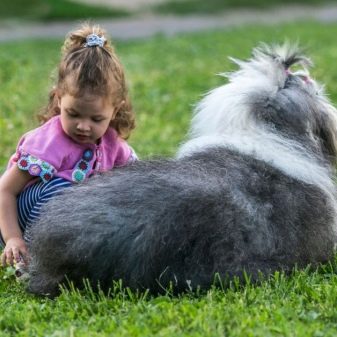
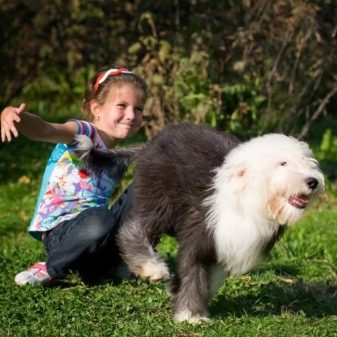
Bobtail is not the most silent of the English dog breeds. His loud barking is carried everywhere, and if the pet is “talkative” enough, it will take a long time to wean him from the bad habit. A well-bred dog from childhood does not cause trouble to the owner, but it is worth considering that these animals do not like to be alone. In communication and games with other dogs, the Old English Shepherd shows miracles of sociability.
She does not fight for territory, avoids fights and is generally very loyal to all representatives of the animal world. Such a pet will be the ringleader on the walking platform, and natural intelligence will allow him to easily emerge victorious in speed and agility competitions.
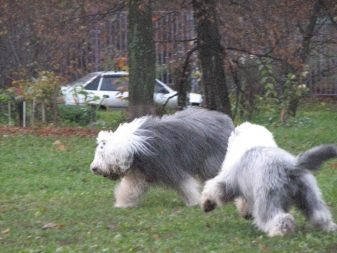
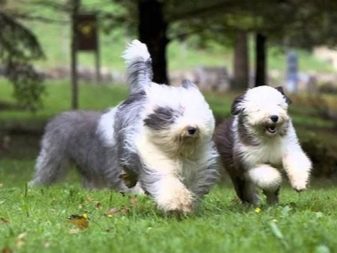
Life span
With the growing popularity of bobtail more and more often the question arose: how many years do they live? Since the Old English Shepherd is a fairly large dog, its life expectancy is not too long. Fluffy giants live on average 10-11 years old preserving the natural cheerfulness of character and physical activity for a long time. But the breed has a number of diseases that can shorten the pet's age. First of all, bobtails, like other dogs, which are characterized by rapid growth in adolescence, are faced with the problem of dysplasia.
Also, the breed is susceptible to the development of bone cancer. Dogs are prone to allergies, eczema, dermatitis - this aspect of their life needs to be given special attention. Like other animals with a large area of white hair on their bodies, they are prone to deafness.

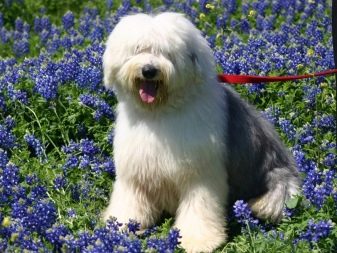
The life expectancy of bobtail very much depends on the diet and the level of physical activity. Despite the fact that you can’t name gluttons of these dogs, obesity is extremely dangerous for their health. Dogs often have diabetes and heart disease. Timely to identify them and start treatment will help regular veterinary examinations.
What to feed?
Food Bobtail should be sufficiently diverse and balanced. The best choice would be premium dry food or holostik designed for dogs of giant breeds. Suitable options for ready-made rations from German manufacturers – Bosch, Belcando Dog Food, American Innova EVO, British Arden Grande. The composition of their products lacks cheap additives and offal that are dangerous to the animal.
Bobtails consume food quite moderately. Adult dogs eat twice a day, puppies up to six months - 6 times a day. It is better to transfer juniors to special feeds - they contain substances that help replenish the dog’s energy reserves and provide opportunities to maintain excellent health for life.

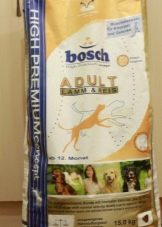

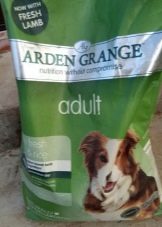
Older Old English Sheepdogs should also be fed with a ready-made balanced diet, taking into account the needs of animals of this age group.
When eating natural foods, a diet is built from certain foods. Here is a list of them.
- Fresh vegetables contain a large amount of fiber. Coarse fibers help food digest properly, normalize the digestive tract.
- Raw lean meat contains the necessary protein. Beef, veal, chicken, turkey are perfect as a basis for the diet. An adult dog needs about 0.5 kg of fillet daily. One day a week, meat is replaced with boneless ocean fish fillets in a volume of about 1 kg. The puppies are given boiled meat. Add cottage cheese, eggs, kefir to the diet. Up to six months, Bobtail babies can be milked for proper skeleton formation.
- Carbohydrates are also needed. These include cereals: rice, buckwheat, corn, oats, cooked in milk (for puppies) or meat broth. Sweet vegetables are added to them - zucchini, tomatoes, pumpkin, beets.

And with a fully prepared diet, and with natural feeding, Bobtail need to provide constant access to water.
Care Rules
The best option for keeping a bobtail is a spacious house with its own yard, where the dog can frolic as it should. When living in an apartment, the animal will need at least two walks. The need for activity at home bobtail is not very high - a 40-60 minute walk will be enough. At home, the dog’s place should be in the area of human presence. She needs to be able to approach the owner, to be with him.
When arranging a bed, excessively soft litter should be avoided. Bobtail food and water bowls are best chosen on a high stand.
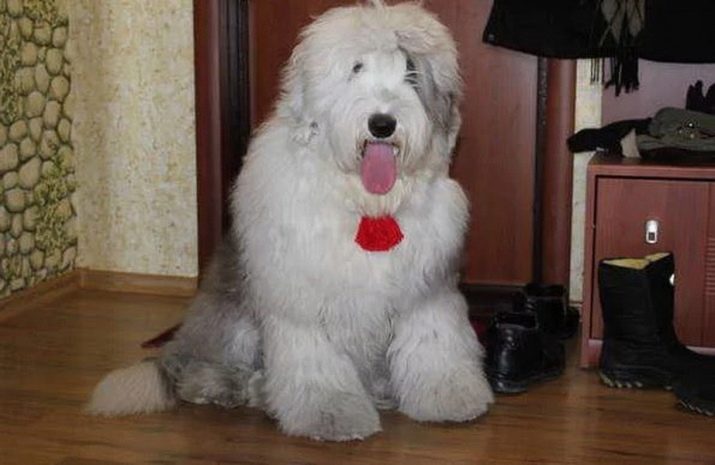
Hair care
A thick and lush bobtail coat requires some care, especially when it comes to a show-class dog. Full combing is required for an adult pet 2-3 times a month. Only such a frequency allows avoiding the formation of tangles, into which the fallen wool turns. Show animals every month must maintain a certain length of wool with the help of a professional groomer.
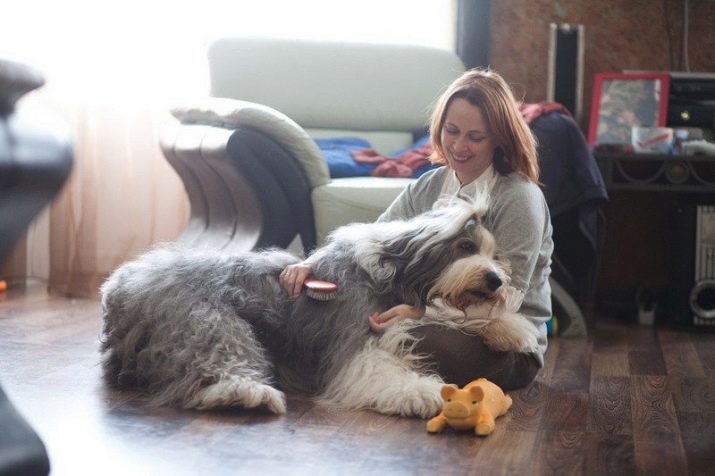
Domestic dogs can be sheared shortly enough in the summer, making it easier for them to thermoregulate.
You need to teach your Bobtail to regular hair care when you are a puppy. The undercoat of the baby is too soft and tender, it needs to be combed out very carefully and delicately. This approach will further avoid the negative reaction of an adult dog to manipulate hair. At first, it is worth making combing short-term, then you can gradually increase the time spent on care. To remove excess undercoat, use a special massage brush or flat comb with elongated rare teeth.
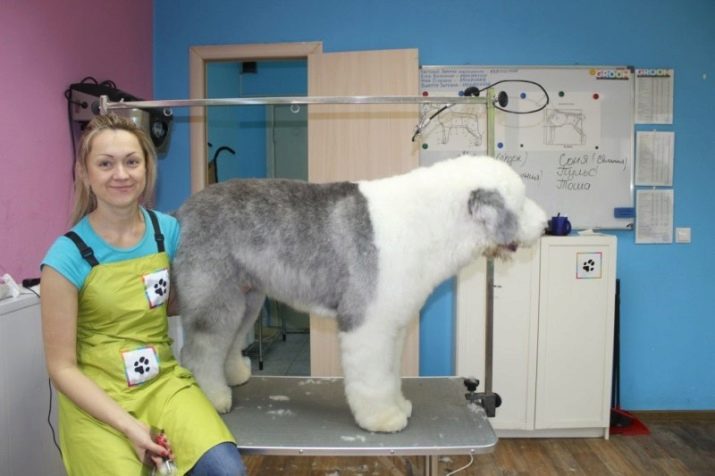
Hygiene procedures
Bobtail is required to bathe about once a season. In summer, an additional intake of water procedures is possible. Use when washing should be specialized means that do not flush natural lanolin from the coat. Frequent washing will only lead to the fact that soft wool, devoid of natural lubrication, will begin to stray into tangles. In winter, the dog cleans the coat on his own, riding in the snow.
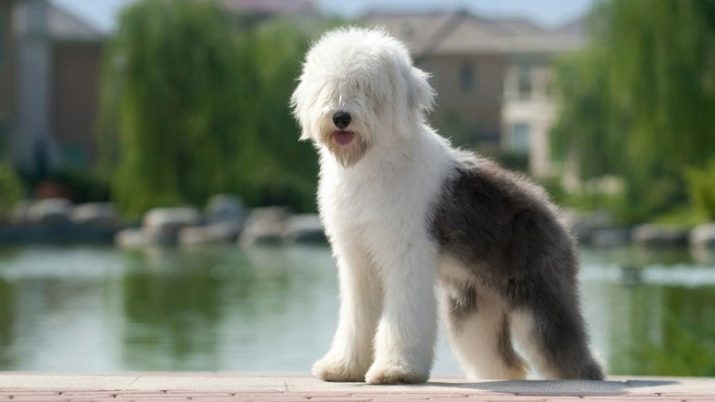
During the combing of the dog, a regular inspection of the auricles is performed. Hair grows in the ears, which must be cut. After removing the excess cover, it is imperative to wipe the skin with a cotton swab with warm water or an antiseptic.
The appearance of dark plaque, discharge with an unpleasant odor, itching are an occasion for contacting a veterinarian. Bobtail claws usually grind naturally. But if they are not short enough, pruning is done monthly. Eyes are rubbed every day with a cotton swab dipped in chamomile broth or tea leaves.

Parenting
Bobtails are growing rapidly - in a short time a puppy weighing 6 kg turns into a dog weighing 40-45 kg. Given the changing dimensions, it is worthwhile to make sure that the dog learns the mandatory rules of behavior as early as possible. Representatives of this breed tend to graze everyone around.. Any moving objects can become a source of increased attention - including cars, bicycles.
So that the pet does not rush after them, it will take a lot of time to master the teams that can keep it.
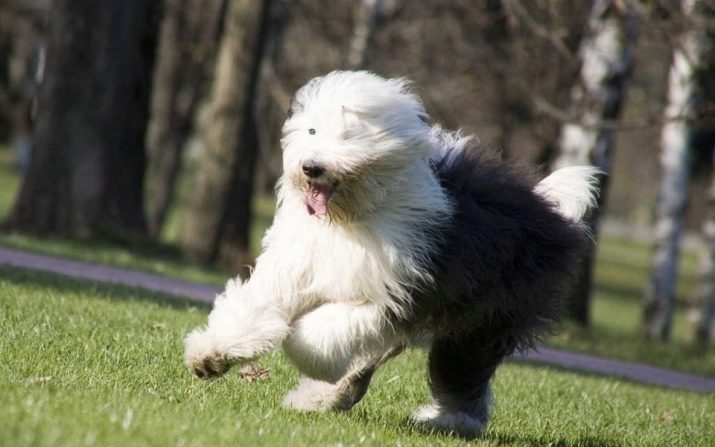
Bobtail requires a lot of patience from the owner. Act during the training should be friendly, but firm enough. The dog must get used to the fact that the commands given by the owner are mandatory. Thanks to high intelligence, representatives of this breed are able to learn a lot of tricks. But you should always start with a basic training course that allows you to train your dog to stop on command, not to approach potentially dangerous objects, to move nearby.
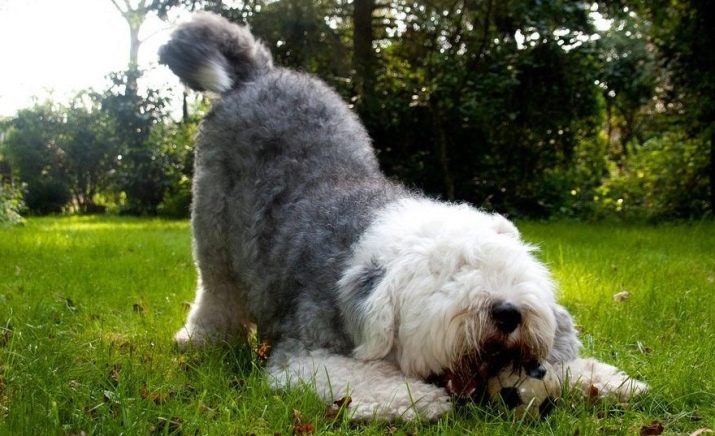
The puppy must not learn the command "not" at home, while he is deprived of free walking. In addition, he must know his place, the command "fu", understand the requirements of "sit", "lay". It is better to teach a leash at home, before the first walk, then the puppy will not experience significant discomfort. In no case should you show pressure, severity in relation to the dog during the training period. Then the learning outcomes will not take long.
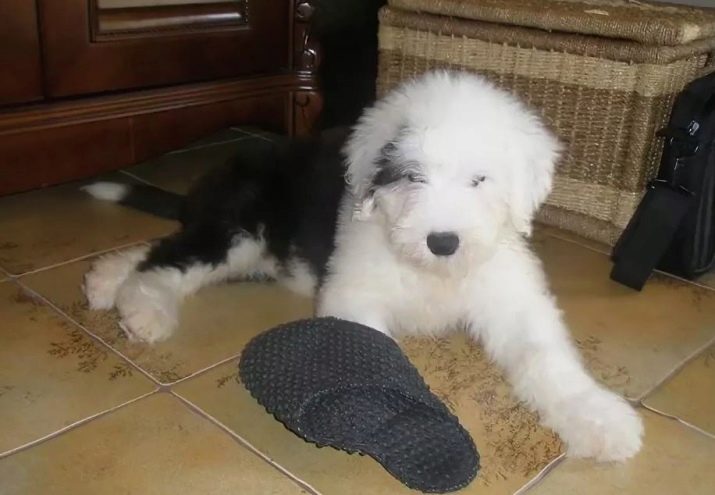
Bobtail can be trained well and can very well be used as guard and guard dogs. Thanks to its shepherd’s roots, the breed has an incredibly valuable talent - the ability to act independently, to take initiative.Having mastered the course of training, the animal is able to cope with the protection of the house, the owner, but remains non-aggressive against people in general.
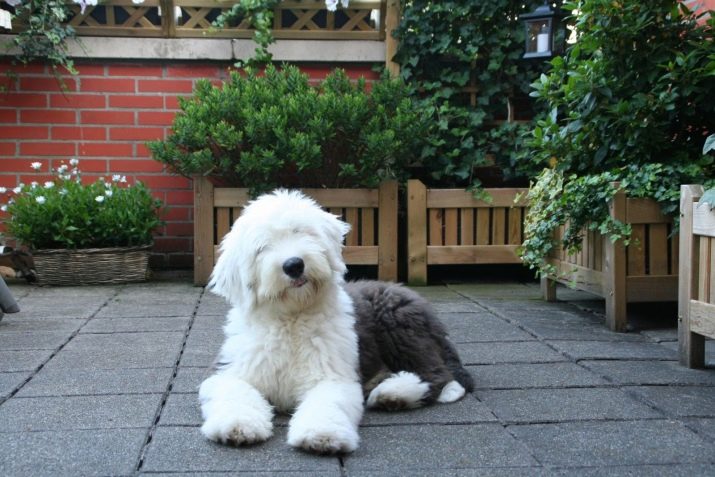
Dog training
The bobtails on display at the exhibitions must master a number of special skills. The dog will have to master a special mode of movement - a measured move in a circle, back and forth or along a triangular path, allowing you to demonstrate the animal’s stats in dynamics. The leash should move freely while moving. The body of the dog moves parallel to the human leg. Another important point - taking the right posture in a static position.
The Bobtail should freeze with a raised head and parallel forelegs. for 1-2 minutes. Also, the pet will have to master the process of demonstrating teeth at the request of the judges.
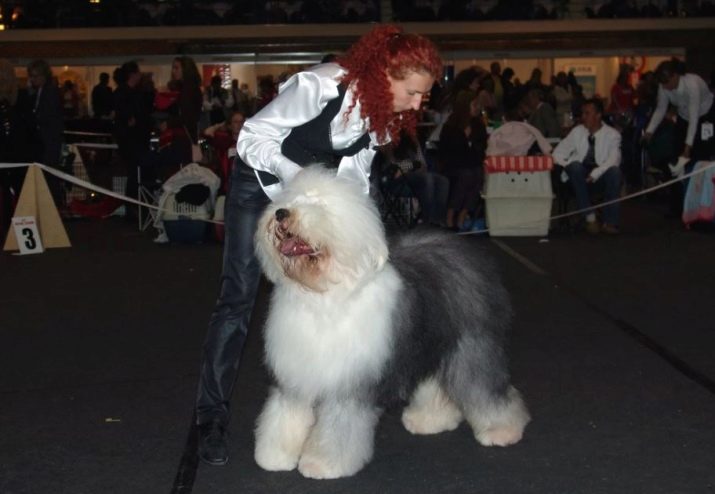
See below for more details.








































